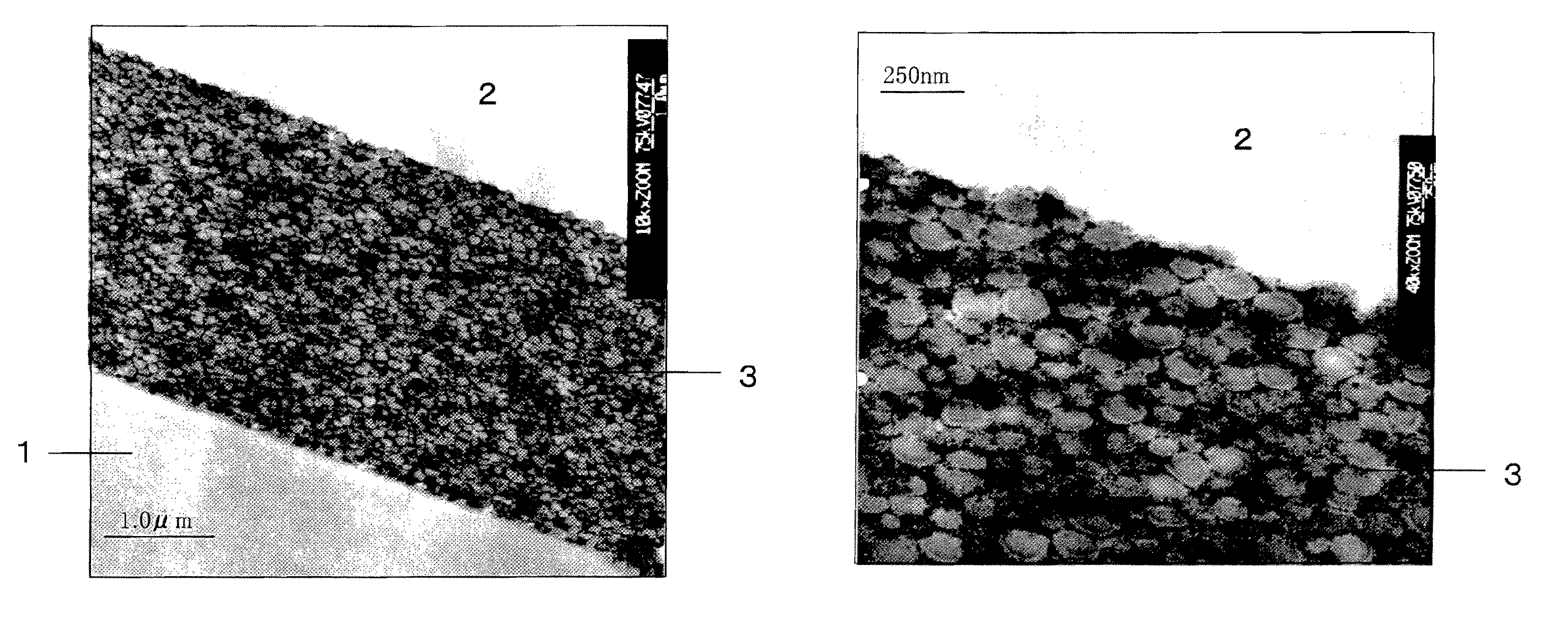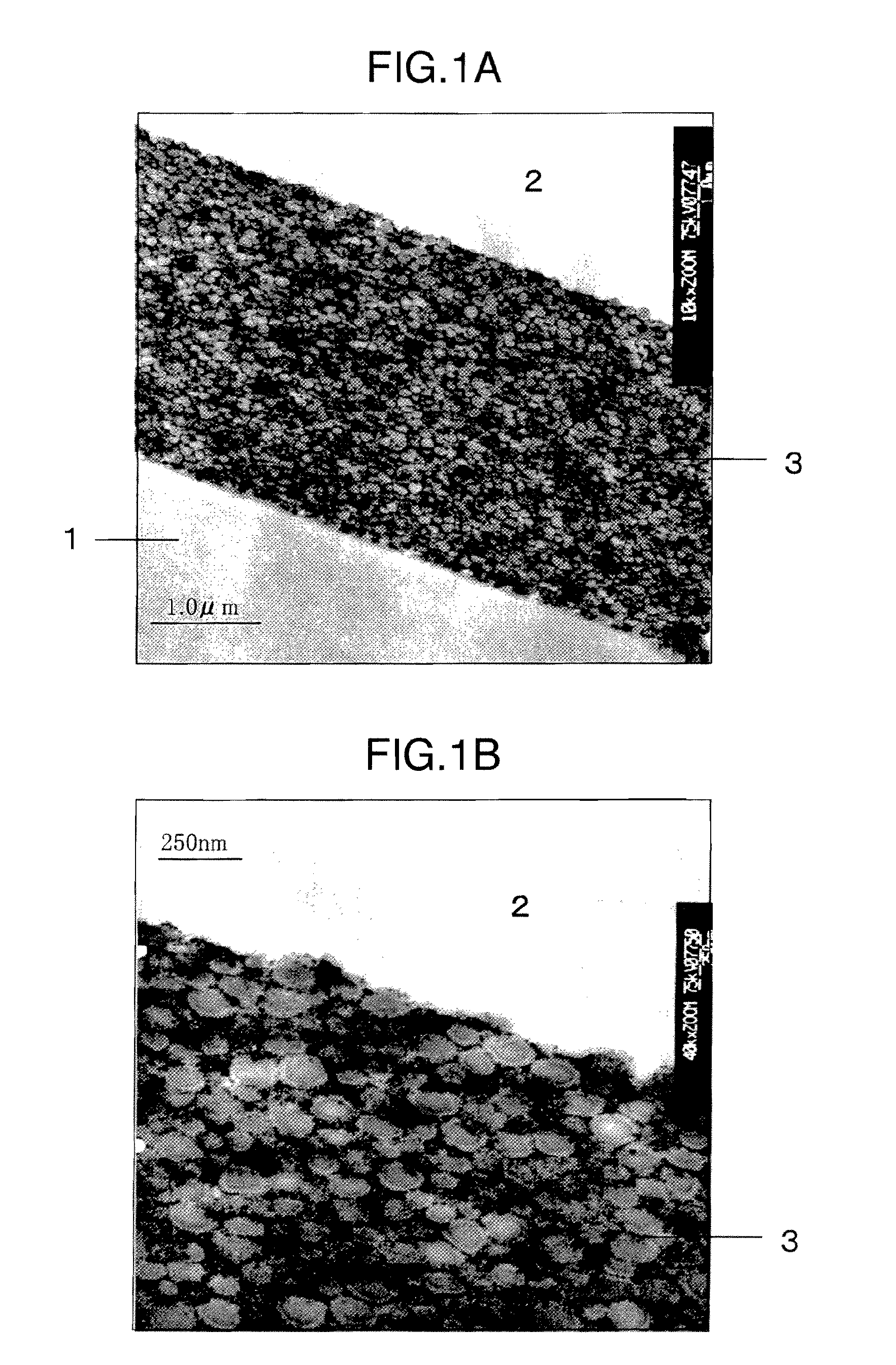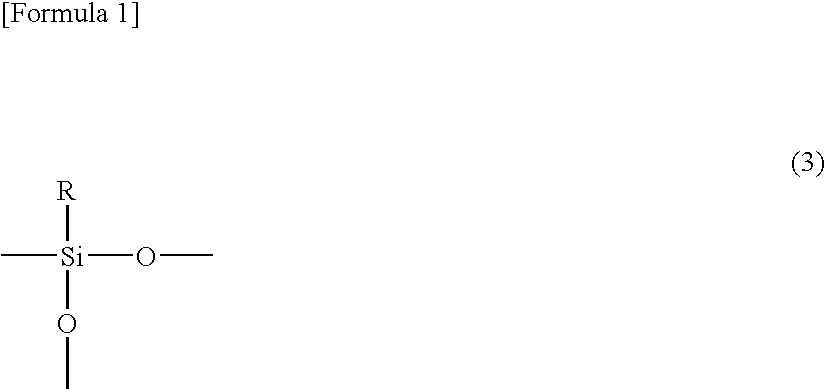Aqueous organic-inorganic hybrid composition
a technology of organic and inorganic compounds, applied in the field of aqueous organicinorganic hybrid compositions, can solve the problems of difficult to obtain continuous and efficient uniform films, yarns and the like by coating, spinning, and difficult to obtain uniform films, etc., to achieve excellent weather resistance, chemical resistance, optical properties, and additionally, antifouling properties
- Summary
- Abstract
- Description
- Claims
- Application Information
AI Technical Summary
Benefits of technology
Problems solved by technology
Method used
Image
Examples
referential example 1
[0218]Synthesis of Polymer Emulsion Particle (B-1) Water Dispersion
[0219]In a reaction vessel equipped with a reflux condenser, a dropping vessel, a thermometer and a stirrer, 1600 g of ion-exchanged water and 2 g of dodecylbenzenesulfonic acid were placed, and then heated to 80° C. under stirring. Into the reaction vessel, a mixed solution composed of 86 g of butyl acrylate, 133 g of phenyltrimethoxysilane and 1.3 g of 3-methacryloxypropyltrimethoxysilane and a mixed solution composed of 137 g of diethylacrylamide, 3 g of acrylic acid, 13 g of a reactive emulsifier (trade name: ADEKA REASOAP SR-1025, manufactured by Asahi Denka Kogyo Co., Ltd., aqueous solution with 25% of solid content), 40 g of a 2% by mass aqueous solution of ammonium persulfate and 1500 g of ion-exchanged water were dropwise added simultaneously over approximately 2 hours under the condition that the temperature inside the reaction vessel was maintained at 80° C. Further, under the condition that the temperatur...
referential example 2
Synthesis of Polymer Emulsion Particle (B-2) Water Dispersion
[0220]In a reaction vessel equipped with a reflux condenser, a dropping vessel, a thermometer and a stirrer, 1000 g of ion-exchanged water and 2 g of dodecylbenzenesulfonic acid were placed, and then heated to 80° C. under stirring. Into the reaction vessel, a mixed solution composed of 86 g of butyl acrylate, 133 g of phenyltrimethoxysilane and 1.3 g of 3-methacryloxypropyltrimethoxysilane and a mixed solution composed of 13 g of diethylacrylamide, 3 g of acrylic acid, 13 g of a reactive emulsifier (trade name: ADEKA REASOAP SR-1025, manufactured by Asahi Denka Kogyo Co., Ltd., aqueous solution with 25% of solid content), 40 g of a 2% by mass aqueous solution of ammonium persulfate and 1000 g of ion-exchanged water were dropwise added simultaneously over approximately 2 hours under the condition that the temperature inside the reaction vessel was maintained at 80° C. Further, under the condition that the temperature insid...
referential example 3
Synthesis of Polymer Emulsion Particle (B-3) Water Dispersion
[0221]In a reaction vessel equipped with a reflux condenser, a dropping vessel, a thermometer and a stirrer, 1600 g of ion-exchanged water and 2 g of dodecylbenzenesulfonic acid were placed, and then heated to 80° C. under stirring. Into the reaction vessel, a mixed solution composed of 86 g of butyl acrylate, 133 g of phenyltrimethoxysilane and 1.3 g of 3-methacryloxypropyltrimethoxysilane and a mixed solution composed of 137 g of N-isopropylacrylamide, 3 g of acrylic acid, 13 g of a reactive emulsifier (trade name: ADEKA REASOAP SR-1025, manufactured by Asahi Denka Kogyo Co., Ltd., aqueous solution with 25% of solid content), 40 g of a 2% by mass aqueous solution of ammonium persulfate and 1500 g of ion-exchanged water were dropwise added simultaneously over approximately 2 hours under the condition that the temperature inside the reaction vessel was maintained at 80° C. Further, under the condition that the temperature ...
PUM
| Property | Measurement | Unit |
|---|---|---|
| particle size | aaaaa | aaaaa |
| mass ratio | aaaaa | aaaaa |
| mass ratio | aaaaa | aaaaa |
Abstract
Description
Claims
Application Information
 Login to View More
Login to View More - R&D
- Intellectual Property
- Life Sciences
- Materials
- Tech Scout
- Unparalleled Data Quality
- Higher Quality Content
- 60% Fewer Hallucinations
Browse by: Latest US Patents, China's latest patents, Technical Efficacy Thesaurus, Application Domain, Technology Topic, Popular Technical Reports.
© 2025 PatSnap. All rights reserved.Legal|Privacy policy|Modern Slavery Act Transparency Statement|Sitemap|About US| Contact US: help@patsnap.com



